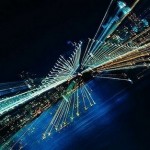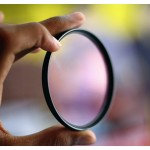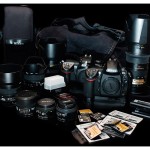
Many modern cameras feature the RAW file format. This feature may be one of the pivotal reasons why you’ve bought that specific camera, or you may be one of those who never use this feature. For professionals, photographing using RAW is a must. But for beginners, is this feature really that important? The short answer is yes. Find out the “why?” in this post.
RAW file format is the original file produced by the camera’s sensor that hasn’t been digitally processed by the camera. In short, these RAW files are literally the raw files that are substantially larger in file size and are not yet ready for consumption, unlike its JPEG counterpart. Not all cameras have this RAW file feature. Generally, they only provide the JPEGs. Because RAW files are produced directly from the sensors, every camera with different sensor technologies has RAW files that are different. Unfortunately, these different RAW files aren’t compatible with each other and processing them needs supporting RAW processing software for that specific type of camera.
RAW files contain brightness information captured by each pixel (in 12 or 14 bits) and has passed through the color filter (RGB). These files are usually sized at 10s of MBs and uses different names according to their producers. Nikon DSLRs uses NEF and Canons use CR2 as their file names. Having RAW files are like having the negative films from the camera and the post-process done in the computer is like the post-processing done in a dark room.
RAW files are original files that haven’t gone through the internal camera process of:
– Demosaicing (Bayer interpolation)
– Gamma correction (curve)
– White balance (WB)
– Sharpening
– Noise reduction (NR)
– Compression (lossy)
So you can do the above process manually as the photographer as you see fit using computer softwares. And yes, JPEG files can also be processed digitally, but JPEG files have high limitations because of the pre-process done by the camera.
There are many advantages in processing RAW-format photographs. Some of which are:
– Avoiding under/over exposures (exposure compensation is possible)
– Setting a more accurate white balance
– Freely setting basic settings such as sharpening, noise reduction, contrast, and curves.
– Getting a wider dynamic range.
– Adjusting levels of noise reduction as is needed.
– Freely experiment with color and saturation.
– Freely determine the level of JPEG compression ratio.
But with these advantages, there are also a few difficulties to note when using these RAW file formats. Some of which are:
– The large size takes up a considerable amount of disk space.
– Needs a fast computer to adequately process without lag.
– Takes a longer amount of time to process batches of photographs.
– Needs special softwares and plugins to read and process RAW files on a computer.
If you want to maximize the use of the RAW feature of your camera, start by finding suitable software for the post-process.
Read Also : RAW vs JPEG, Which one better?




